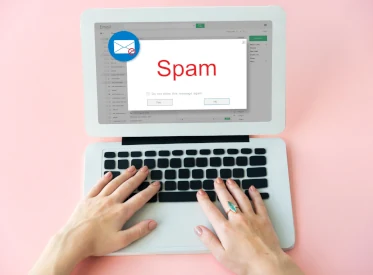Useful Articles - News
Joomla is one of the most popular content management systems (CMS) and offers many features that make it an ideal choice for building websites. Here are some reasons why you might choose Joomla for your new website:
1. Flexibility and Customization
Joomla is extremely flexible and can be adapted to meet many different needs, whether it's a small personal website or a large corporate site. You can easily customize the content, design, and functionalities using extensions and add-ons.
2. Rich Features Out of the Box
Compared to other CMS platforms, Joomla offers many advanced features out of the box, such as multilingual site management, user creation with different permission levels, built-in forms, and strong SEO support.
3. User and Permission Management
Joomla has a robust user management system that allows you to create different roles and permissions. This is particularly useful for websites with multiple administrators or editors, as you can define who has access to which content or features.
4. Built-in Multilingual Support
Joomla provides support for multilingual websites without requiring the installation of additional extensions. This makes it ideal for businesses or organizations targeting international audiences and offering content in multiple languages.
5. SEO-Friendly System
Joomla is equipped with built-in SEO tools that make it easy to optimize your website for search engines. You can customize titles, meta descriptions, URLs, and create search engine-friendly structures.
6. Strong Community and Support
Joomla has a large and active community that provides support, tools, and extensions. There are also many available resources, such as forums, tutorials, and manuals that help both beginners and advanced users understand and leverage the CMS.
7. Scalability and Extensions
Joomla offers over 8,000 extensions and add-ons, allowing you to add new features to your website easily. From e-commerce platforms to contact forms and social media integration, you can find whatever you need.
8. Security
Joomla places great importance on security and has an active team that monitors threats and regularly updates the CMS. Additionally, it offers many tools and extensions to enhance the security of your website.
9. Open Source and Free
Like other CMS platforms such as WordPress, Joomla is open source and free. You can download, install, and use it without paying for licenses, and you have the freedom to modify it according to your needs.
10. Great Choice for Complex Websites
If you are planning to create a more complex website with many different elements and functionalities, Joomla is an excellent choice. It provides far more built-in capabilities for managing complexity compared to simpler CMS platforms.
In summary, Joomla is a powerful, flexible, and secure platform that offers rich features for creating any type of website, from simple blogs to complex portals.
There are several reasons why your emails might end up in the recipient's spam folder. Here are the most common reasons:
1. Use of Spam-Related Words or Phrases
- Certain words or phrases, such as "FREE," "Offer," "Win Now," etc., trigger spam filters as they are often used in malicious or unwanted emails.
- Avoid excessive punctuation (e.g., "!!!") or ALL CAPS, which may also be flagged as suspicious by filters.
2. Low Domain or IP Reputation
- If your email address is associated with a domain or IP address with a poor reputation due to previous spam sending (e.g., if your domain has been reported for sending unsolicited emails), your emails may end up in the spam folder.
- Email providers check the reputation of your domain and IP to determine if an email is legitimate or not.
3. Inaccurate or Incomplete Information in the Email
- Lack of a real sender name or failure to use an appropriate reply-to address can make your email appear suspicious.
- Additionally, if there is no valid physical address or if the CAN-SPAM regulations are ignored (e.g., lack of an unsubscribe option), spam filters may be triggered.
4. Sending Emails to Invalid or Non-Consensual Lists
- If you send emails to recipient lists without their explicit consent (opt-in), recipients may report your emails as spam, which reduces your reputation and increases the chances of ending up in spam.
- Also, sending bulk emails to unverified or old lists may include many inactive or non-existent addresses, negatively affecting the sender's reputation.
5. Poor Email Design or Code
- An email containing too many images relative to text, broken links, or poorly structured HTML code may be flagged as spam.
- Using too many links or sending emails solely with images and little text can also cause issues.
6. Low Engagement with Your Emails
- If your recipients rarely open your emails or engage with them, email providers may interpret this as a sign that your messages are unwanted, increasing the chances of being flagged as spam.
- Sending relevant and valuable content can help boost engagement rates.
7. Absence of SPF, DKIM, or DMARC Records
- These authentication records (SPF, DKIM, DMARC) help email providers verify that the email is coming from a trusted and authorized sender.
- If you haven’t set up these records on your server or domain, your emails may be considered suspicious.
8. Sending Emails Too Frequently
- Sending a large number of emails in a short period can be seen as spam by email providers, especially if recipients haven’t agreed to receive them.
- It's important to avoid over-sending and use sending strategies that don’t overwhelm your recipients.
To improve your email delivery and avoid spam filters, it's crucial to follow best practices in email marketing, such as carefully selecting content, ensuring your domain's reputation, and providing real value to your recipients.
The success of a website depends on many factors that combine to offer a good user experience, improve visibility in search engines, and achieve business goals. Here are some of the main factors that contribute to a successful website:
User Experience (UX)
- User-friendly navigation: The website should be easy to use, with a clear and logical structure, so that users can easily find what they are looking for.
- Loading speed: The page loading speed is crucial. Users abandon websites that take too long to load, which negatively impacts SEO as well.
- Mobile responsiveness: With the growing use of mobile devices, the website must be mobile-friendly and function properly on all devices.
Content Quality
- Relevant and engaging content: The content must be useful and address the needs of the audience. Articles, videos, and images that are engaging and informative maintain user interest.
- Frequent updates: Content should be updated regularly to remain current and relevant to the latest developments.
- SEO-optimized content: Using the right keywords and optimizing the texts helps the website rank higher in search engines.
Design and Aesthetics
- Attractive and modern design: A well-designed website is visually appealing and draws users in. Modern and clean design enhances the user experience.
- Consistency with the brand: The design of the website should reflect the brand’s identity consistently, from colors and graphics to language and tone.
Search Engine Optimization (SEO)
- On-page SEO: Optimizing titles, meta descriptions, headings, and the proper use of keywords contribute to the better ranking of the website in search engines.
- Backlinks: Links from other reputable websites to yours increase its value in the eyes of search engines, boosting SEO.
- Technical SEO: Factors like speed, security (e.g., HTTPS), URL structure, and mobile optimization play a significant role in the overall SEO performance of the website.
Security
- SSL certificate (HTTPS): Using HTTPS for secure data transmission is essential for every website, both for protecting users and for search engine ranking, as it is a significant factor for SEO.
- Protection against attacks: By using firewalls and other security measures, the website is protected from malicious attacks, maintaining its reliability.
User Interaction
- Social media integration: The presence of the website on social networks and the ability to share content increase engagement and the spread of content.
- Contact forms and live chat: Easy access to communicate with the business boosts trust and enhances the user experience.
Analytics and Optimization
- Performance monitoring: Using analytics tools (e.g., Google Analytics) helps track user behavior, understand the website's performance, and identify areas for improvement.
- A/B testing: Running experiments with different versions of the website (e.g., different buttons or layouts) helps identify which elements work best.
Clear Goals and Calls to Action (CTAs)
- Clear objectives: Each page of the website should have a clear goal (e.g., newsletter sign-up, product purchase) so that users know what action to take.
- Strong Call-to-Actions (CTAs): Action buttons should be visible and guide users to specific actions, such as signing up, making a purchase, or contacting the business.
A successful website combines all these elements to offer a comprehensive and effective user experience while serving business objectives.





